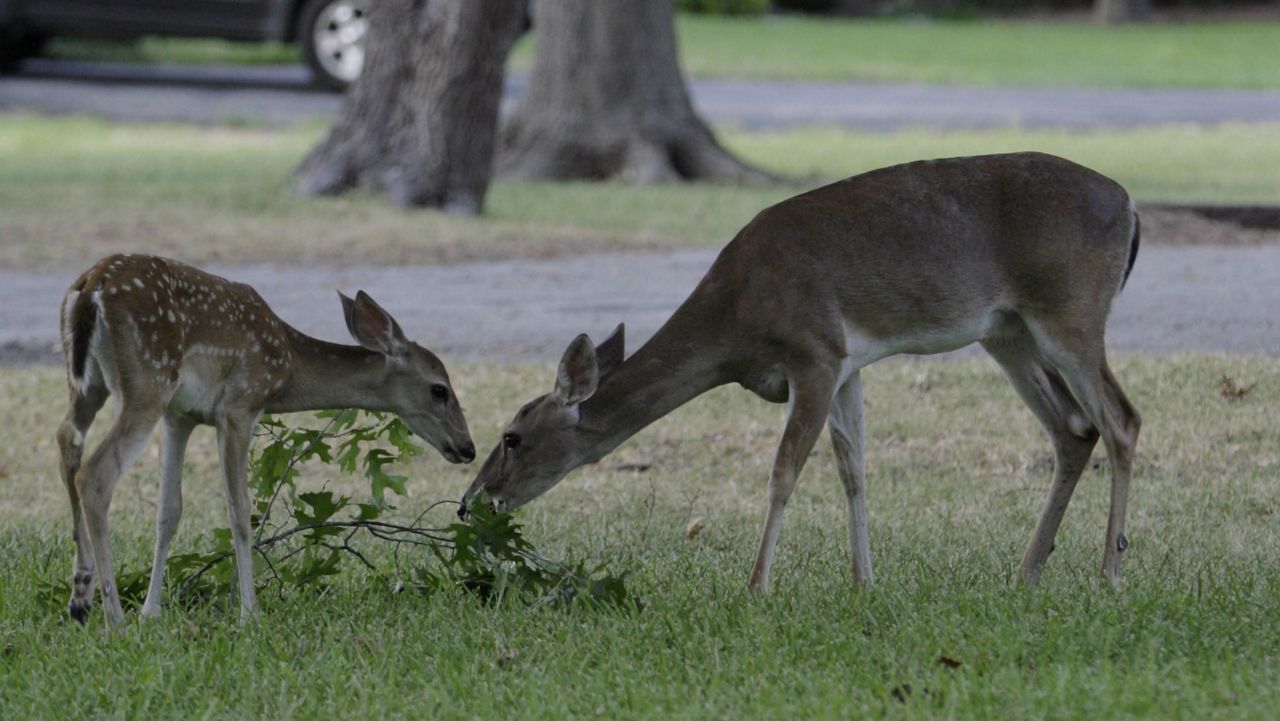AUSTIN, Texas – Over the last several weeks you may have seen viral posts talking about increased number of wild animals entering urban areas, but biologist say animals likely aren’t changing their behaviors because you’re social distancing. It’s probably because you’re just noticing them more.
- Viral posts about increased animal sightings because of human social distancing are likely inaccurate
- Texas biologists say animals are behaving normally for this time of year
- Some Texas cities have actually see a decrease in wildlife reports
The Texas Parks and Wildlife Department (TPWD) says it's been noticing similar posts but that ultimately, urban biologists aren’t seeing any abnormal behavior in animal populations.
The state of Texas tracks animal occurrences for species that are considered the “greatest conservation need,” including white-tail deer, dove species, Rio Grande wild turkeys, golden-cheeked warblers, alligator snapping turtles, and spot-tailed earless lizards. They also monitor mountain lions and coyotes to see how they’re impacting the environment and for safety purposes.
The biologists doing that tracking have found no reports of irregular animal behavior related to social distancing in humans.
Why does it seem like there is more wildlife?
“It is springtime, so things are generally ‘waking up’ and potentially expanding their previous home ranges as they look for mates and food,” said TPWD spokeswoman Stephanie Garcia.
She explains that this time of year, calls to municipalities reporting wildlife sightings usually go up.
“Spring brings an increase in animal movements, and that’s happening again this year under a different set of circumstances that makes it easy to attribute cause and effect, albeit incorrectly,” said Garcia.
But this year, something different is happening—there are actually fewer calls reporting wildlife in some areas.
Between March 1 and April 20 of last year, the San Antonio Animal Care Services Department received 499 wildlife calls. This year during the same time period there were 25.
The numbers in Austin haven’t been quite as dramatic, but between March 25 and April 16 of 2019, Austin-Travis County 3-1-1 had 150 service requests related to wild animal sightings and 17 coyote complaints. This year, it's had 126 wildlife exposure calls and 15 coyote complaints during those same dates.
Williamson County has also seen a decrease in calls. In January and February of this year, it averaged about 450 wildlife calls each month. So far this April, it has only received 168.
“Fewer calls to city hotlines are likely caused by fewer people leaving their house and fewer people hiking in parks at dawn/dusk,” explains Garcia.
Another factor that may make it seem like there is more wildlife around: the increased utilization of home security cameras. Garcia says cameras like these may be showing animals just passing through during times when people normally aren't outside.
What should you do if you see a wild animal in your area?
There are actually several things you can do if you notice wildlife that actually helps biologists do their work.
Garcia recommends reporting your sightings to websites like iNaturalist.org and eBird.org.
“We encourage people to use those portals to both record their wildlife sightings and engage with other folks interested in the natural world,” she said.
If you’re looking for an opportunity to have your own wildlife spotting, this weekend is an annual event called the City Nature Challenge. Participants get to compete to see how many animals they spot over the course of a weekend.
Because of COVID-19 social distancing precautions, participants are being asked to find as much nature as they can in their own backyard.



